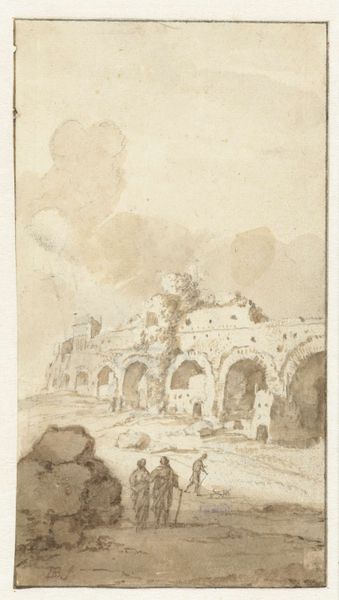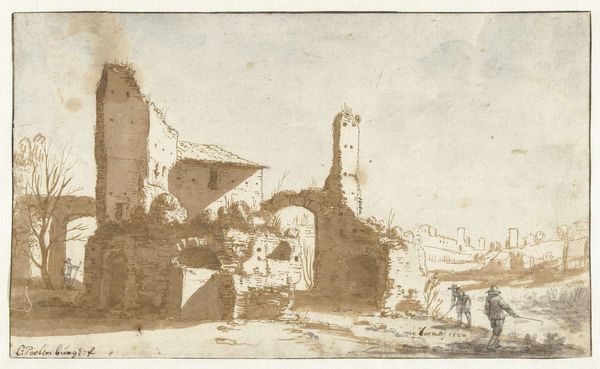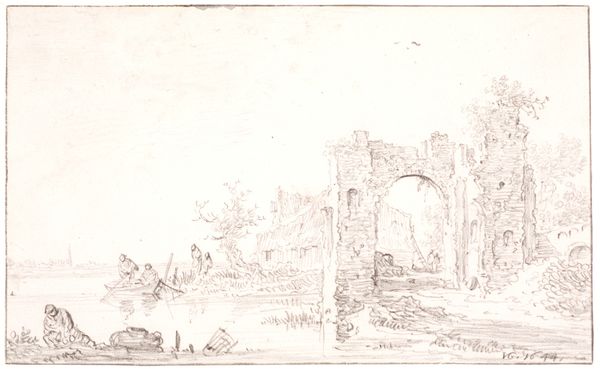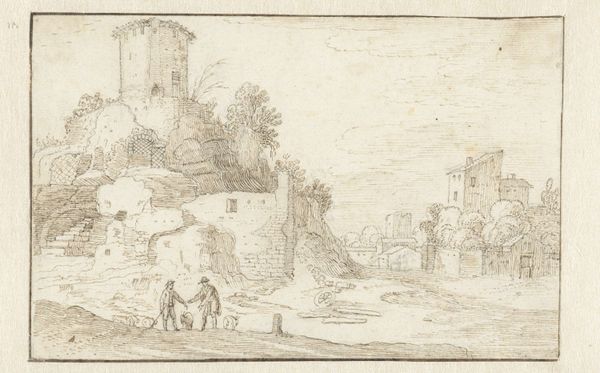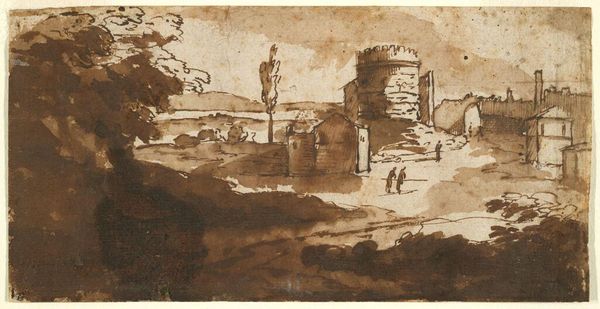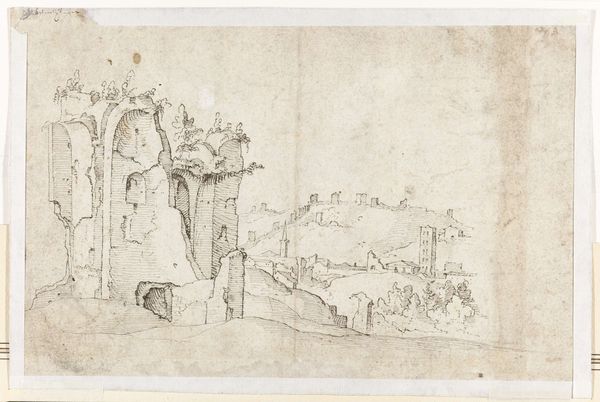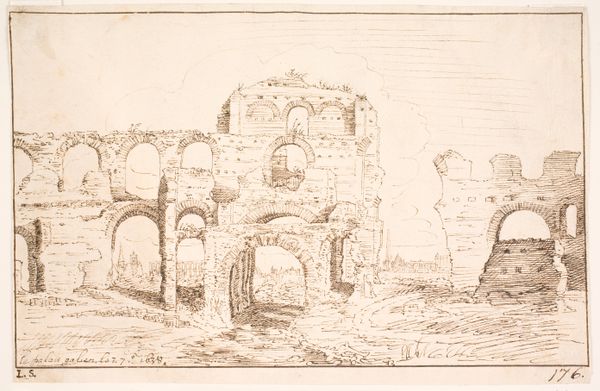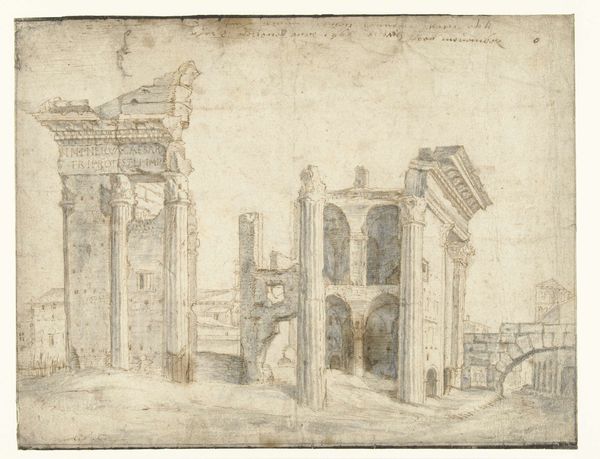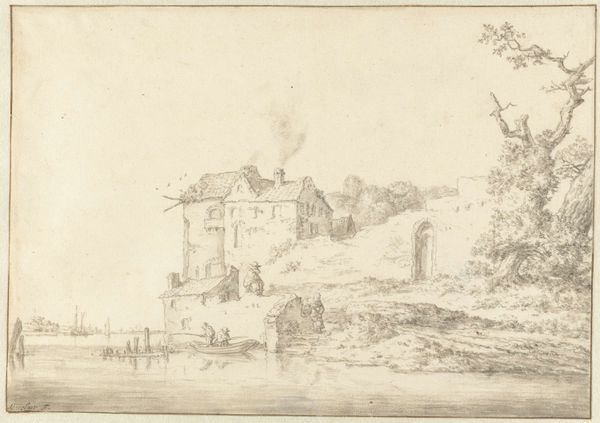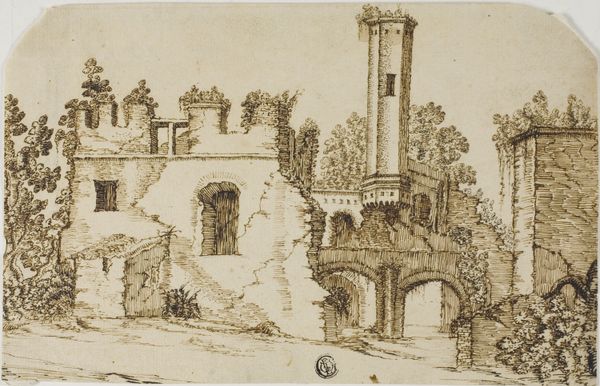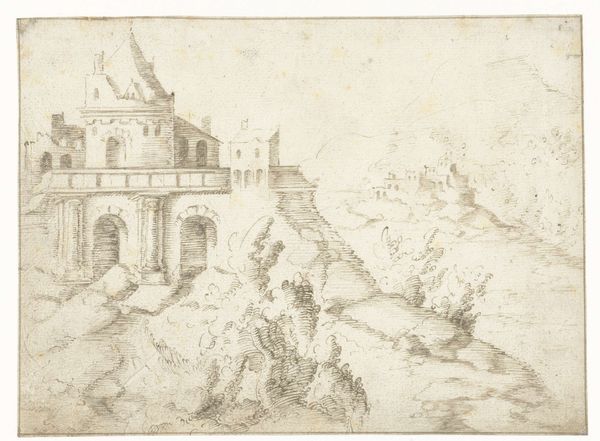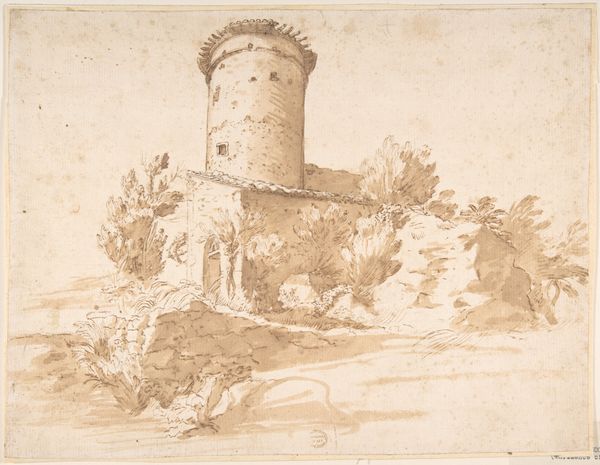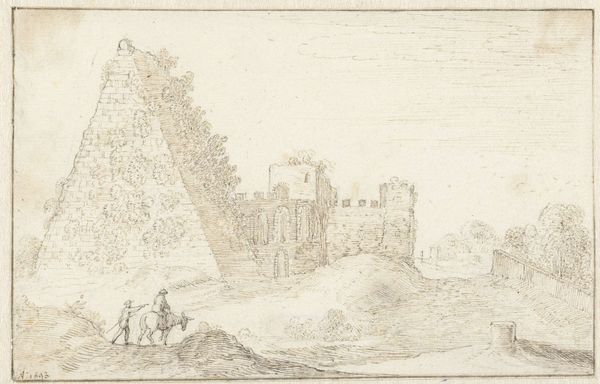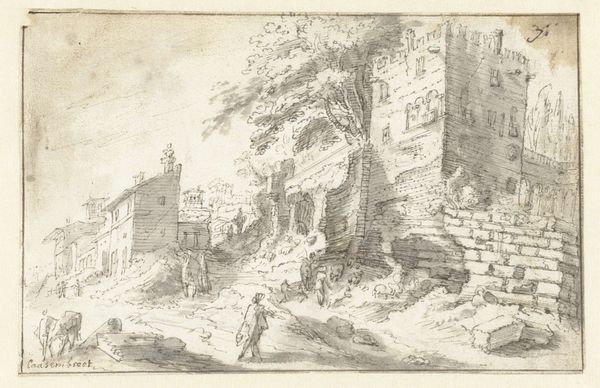
#
aged paper
#
toned paper
#
sketch book
#
etching
#
personal sketchbook
#
sketchbook drawing
#
watercolour illustration
#
storyboard and sketchbook work
#
sketchbook art
#
watercolor
Dimensions: height 165 mm, width 178 mm
Copyright: Rijks Museum: Open Domain
Editor: This is Jan Both’s "Italian Building with Heavy Round Tower," made sometime between 1628 and 1652. It's a watercolor and graphite sketch currently housed in the Rijksmuseum. I’m immediately struck by how this simple sketch evokes such a sense of place. What do you see in this piece? Curator: Well, seeing this work through the lens of art’s public role, I’m particularly drawn to how Dutch artists like Both, through their depictions of Italy, helped construct a shared cultural understanding of the Italian landscape for a Dutch audience. It’s more than just a picture; it's a representation shaped by cultural and political interests. Do you notice the details he emphasizes? Editor: Yes, especially the crumbling textures and the light. I guess I hadn't thought about the impact that images like these might have on a society’s collective imagination of a faraway place. Was this common at the time? Curator: Absolutely. Images of Italy were highly sought after in the Netherlands. They fed into a sense of cultural sophistication, and possessing these images reflected on the collector. So, this simple sketch becomes evidence of complex socio-economic dynamics at play. Think about what it meant to own a little piece of Italy, rendered by a Dutch hand. Editor: So it’s not just a depiction, but also a marker of status. It's fascinating to consider the layers of meaning embedded in what I initially perceived as a simple landscape study. Curator: Exactly! And understanding that context adds so much richness to our viewing experience. Editor: I'll definitely look at landscape sketches differently now, considering not just what is depicted, but also why and for whom. Curator: Indeed, that shift in perspective is the first step toward contextualizing the complex and intertwined relationship between artist, artwork, and audience.
Comments
No comments
Be the first to comment and join the conversation on the ultimate creative platform.
